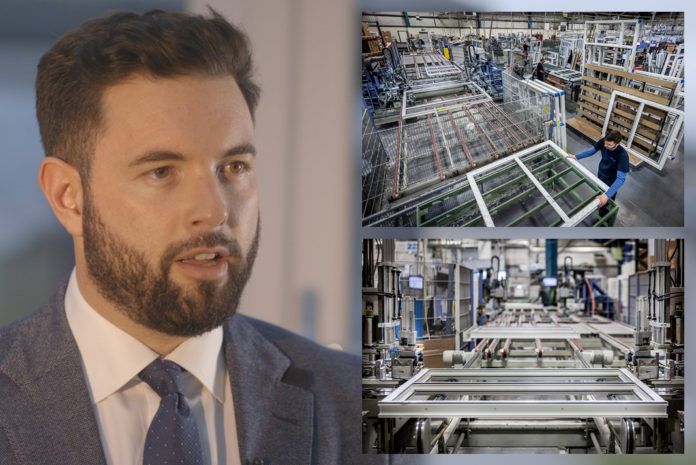
By Ryan Johnson, managing director, Emplas
COVID-19 has changed the way we live and work on many levels. This includes highlighting and reinforcing something which has long underpinned our own working culture – the importance of transparency.
We have written to our customers to explain some of the challenges that we face within our supply chain. I believe that some of those points are worth wider, public discussion.
We’re seeing a boom. That’s the good part. Our supply chain is, however, creaking under exponential growth in demand. This isn’t unique to Emplas. Every major systems company, hardware and glass manufacturer is struggling to meet supply. As a consequence, so are fabricators.
We have capacity, we have capability – but the availability of glass, foiled product and some hardware is forcing us to push out lead times.
There is no point in trying to pretend that our supply chain, or as a consequence those of our customers, are unaffected by this.
From the conversations I am having daily with fabricators nationwide, the delays on foils are a universal problem. That is supply not only of one or two profiles. Foil lead times on all leading systems have been extended.
There’s volatility in glass supply (with an inhouse IGU capability we and our customers are to an extent, insulated from the worst of this). There are also significant shortages of hardware.
So, what are we doing about it?
Well, I believe everything we can. We have redirected resource from our own retail businesses, here in the UK and in Australia, to prioritise the supply of product to our trade customers.
We have taken some very difficult decisions about who we supply. Focussing on the customers who have committed to work in partnership with us and whose loyalty we are doing everything within our power to return.
Similarly, we are working closely with our suppliers, sharing forecasts with them on a daily basis to support them in managing demand.
We are bringing forward manufacture of standard non-foiled product to build additional capacity within our systems, so that as soon as those foils that are currently thin on the ground come back into stock at volume, we can double our efforts to turn orders around.
If, however, our systems provider cannot deliver foils to us for six weeks because their supply chain is also struggling with demand; or hinges are not available because they are not in the country; or because certain laminates or coatings aren’t available to manufacture IGUs – then our ability to deliver to our own customers within ‘normal’ lead times is also impacted.
It’s no easy task to switch a large business ‘back on’ after lockdown. We started early and that’s allowed us to build in-line with demand so that we have had full capacity reinstated for the past month or more.
Systems companies needed greater volume to justify turning production back on again. As a consequence, they have had to go from a standing start to exponential growth in demand and 150% of capacity, in only a few weeks.
This is why I am asking for understanding, from our customers and the window and door supply chain at large.
There is no way for me to ‘sugar-coat the pill’ but for the next month or two at most, we need to engage and explain to the end-user that lead times for new windows and doors are going to be extended.
That’s not on every product, we continue to be able to supply, for example, the AluK F82 bi-fold on lead times of only 15-days; standard product is also available on more or less normal lead times.
On some products, people are, however, going to have to wait.
We believe our customers will understand that this is not about our capacity or our will to deliver – but the availability of product to manufacture.
We have great partnerships, we have purchasing power and are mobilising both to put our customers at the front of the queue. To a point, however, we all have to wait a little in line.
Homeowners will generally be prepared to do this for good tradespeople and the right product. With regret, we’re going to have to ask the same from our customers on certain products. This is, however, short term. And we expect to be able to reinstate normal lead times as soon as we can.
Up until then, we need to approach business with a new openness, connecting the supply chain from systems companies to installers and ultimately to the end-user, in order to manage expectation.
We are all in this together, so we all may as well pull in the same direction.



